It’s discouraging to all stakeholders that annually, about 1.2 million students fail to graduate from high school. And “Pathways to Prosperity” reports that just 56% of college attendees complete a degree. Fingers point all directions but nothing changes the stark truth: Something causes kids to hate learning so much that they’d rather face their future without the knowledge or skills to do so successfully.
Solutions to this problem abound but one of the most popular with K-16 educators — because it works — is to gamify learning. Wikipedia defines “gamification” as:
“an educational approach to motivate students to learn by using video game design and game elements in learning environments. The goal is to maximize enjoyment and engagement through capturing the interest of learners and inspiring them to continue learning.”
Games remind kids of days when they chose their own seats, worked at their own pace, and responded to their own interests. Through childhood games, they learned social skills, problem-solving, sequencing, and a whole bunch more while they thought they were doing a puzzle, building blocks, or playing dodgeball.
Fast forward to formal schooling. As early as Kindergarten, kids are stuck into classrooms where play is replaced with rote drills, repetition, and growing boredom. It’s taken the experts decades but finally, the value of applying gameplaying characteristics to learning is being recognized as a formidable approach. I’ve written much about the use of games and simulations but today, I want to focus on the student as maker, where they create the game, troubleshoot problems, and refine the end result — exactly the traits valued by coding and programming.
Here are some of my favorite game creation tools for students:
 Adventure Games Studio
Adventure Games Studio
High School and up
Free
Adventure Games Studio (AGS) is a Windows software program appropriate for mid-level game creators. Using their own story and artwork, students upload and then create their own 2D point-and-click adventure game similar to Lucas Arts and Sierra Games from the early 2000’s. The program includes a collection of backgrounds, characters, and pieces that can be used in the new game. Happily, there are many YouTube tutorials on using AGS like this one from Chris Jones.
Note: AGS was created over twenty years ago, though it is constantly updated. It would be wise to preview it before sharing with students.
 ClassTools
ClassTools
Grade 2 and up
Free
ClassTools is well known for its easy-to-use templates themed to popular activities (such as Facebook). Many are intuitive to use, require little direction from teachers, and can be completed in under five minutes, making them the go-to resource for projects and lesson plans. No sign-up, log-in, or password is required. Games include arcade-style games, Pac-Man, Breaking News generator, crosswords, and more. Once created, games can be shared using the ClassTools’ link.
Note: Once published, the games are public so make sure students keep all information generic and vanilla.
 GameMaker Studio 2
GameMaker Studio 2
High School+
Free/fee
GameMaker Studio 2 is one of the top tools available for students with a serious interest in game development. It uses a familiar drag-and-drop interface but also has scripting available for pros. Because of its robustness, the learning curve can be steep though committed students will have no problem. It runs on Windows and Mac as well as Ubuntu, Linux, Android, iOS, UWP, HTML5, XBox One, and PlayStation 4.
GameMaker Studio 2 is best suited to teaching for a full unit or semester rather than a quick in-and-out as might be used for Hour of Code.
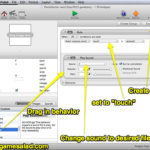 GameSalad
GameSalad
High School+
Free/fee
GameSalad is a leading game creation tool for the K-12 ecosystem. Its drag and drop interface requires no knowledge of programming and is familiar from many other coding webtools and programs. One of its goals is to make learning computer science and programming easy. That being said, it is best suited for students who have experience with basic game creators such as Scratch or Hopscotch. Most students will be able to create their first game within a few weeks.
GameSalad is one of several on this list that focus on classroom use. It offers a web-based state standards-aligned curriculum with everything educators need to teach computer science fundamentals. Units are modular. Each unit covers one or more topics and each features a specific game genre or mechanic, giving maximum flexibility to design a program that meets the needs of students.
 Gamestar Mechanic
Gamestar Mechanic
4th-9th grade
Free/fee
Gamestar Mechanic teaches game design through the use of web-based game-based quests and courses. Before students begin the process of creating a game, they practice gaming skills and take design courses from professionals.
Gamestar offers an Educational Package affordably priced with everything needed to teach game design to students including a teacher dashboard for tracking individual and class progress.
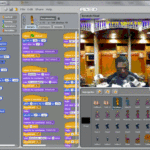 Scratch
Scratch
Ages 8-16
Free
With MIT’s web-based Scratch program, students create games and animations that are easily shared with others. It uses the familiar drag-and-drop interface with lots of free backgrounds, characters, and more to build exactly the game students want. For reluctant creators, they can select one of the over 39 million projects included in the gallery and remix it to the level of their ability. Scratch is available on Windows and Macs. Teachers will be interested in the education-focused Scratch website from Harvard called ScratchEd.
Note: For students younger than 2nd grade, Scratch Jr. is an excellent alternative.
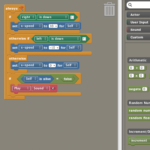 Stencyl
Stencyl
Age 6 and up
Fee
Stencyl is downloadable software that uses an intuitive drag-and-drop block-snapping interface to choose game elements. While coding is not required, Stencyl does offer an advanced edition for Power coders who wish to write their own code. Once a game is completed, it can be published to iOS, Windows, Mac, Linux, and Flash games without a code.
Stencyl provides an Education Kit — including a curriculum — for a full coding class.
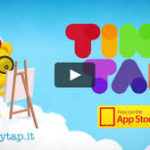 TinyTap
TinyTap
Age 7 and up
Fee (subscription) for Premium content
Using award-winning TinyTap, students can play, create, and share interactive games and lessons on iPads, iPhones, and Android. No coding is required. Creators can upload their personal photos and designs or use TinyTap templates and graphics. The app can either be downloaded to an iPad or Android tablet or used on a computer desktop. For those interested, there are excellent how-to videos available on YouTube.
***
Students will work more rigorously and learner higher-order thinking skills faster doing something they love. Creating their own game that can then be shared with others is exactly that.
— published first on TeachHUB
More on Games and Simulations
Zapzapmath–Gamify any Math Curriculum
5 Resources to Gamify Student Writing
Hour of Code Bundle of Lesson Plans
Jacqui Murray has been teaching K-18 technology for 30 years. She is the editor/author of over a hundred tech ed resources including a K-12 technology curriculum, K-8 keyboard curriculum, K-8 Digital Citizenship curriculum. She is an adjunct professor in tech ed, Master Teacher, webmaster for four blogs, an Amazon Vine Voice, CSTA presentation reviewer, freelance journalist on tech ed topics, contributor to NEA Today, and author of the tech thrillers, To Hunt a Sub and Twenty-four Days. You can find her resources at Structured Learning.


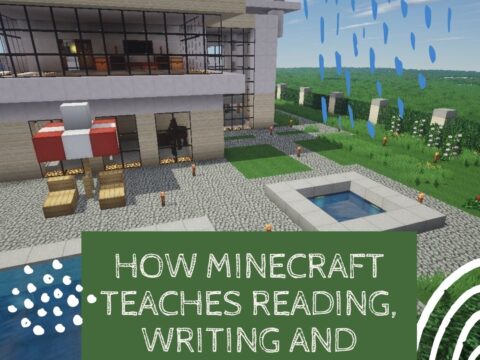



































1 thought on “Kid-created Games That Teach”
Comments are closed.